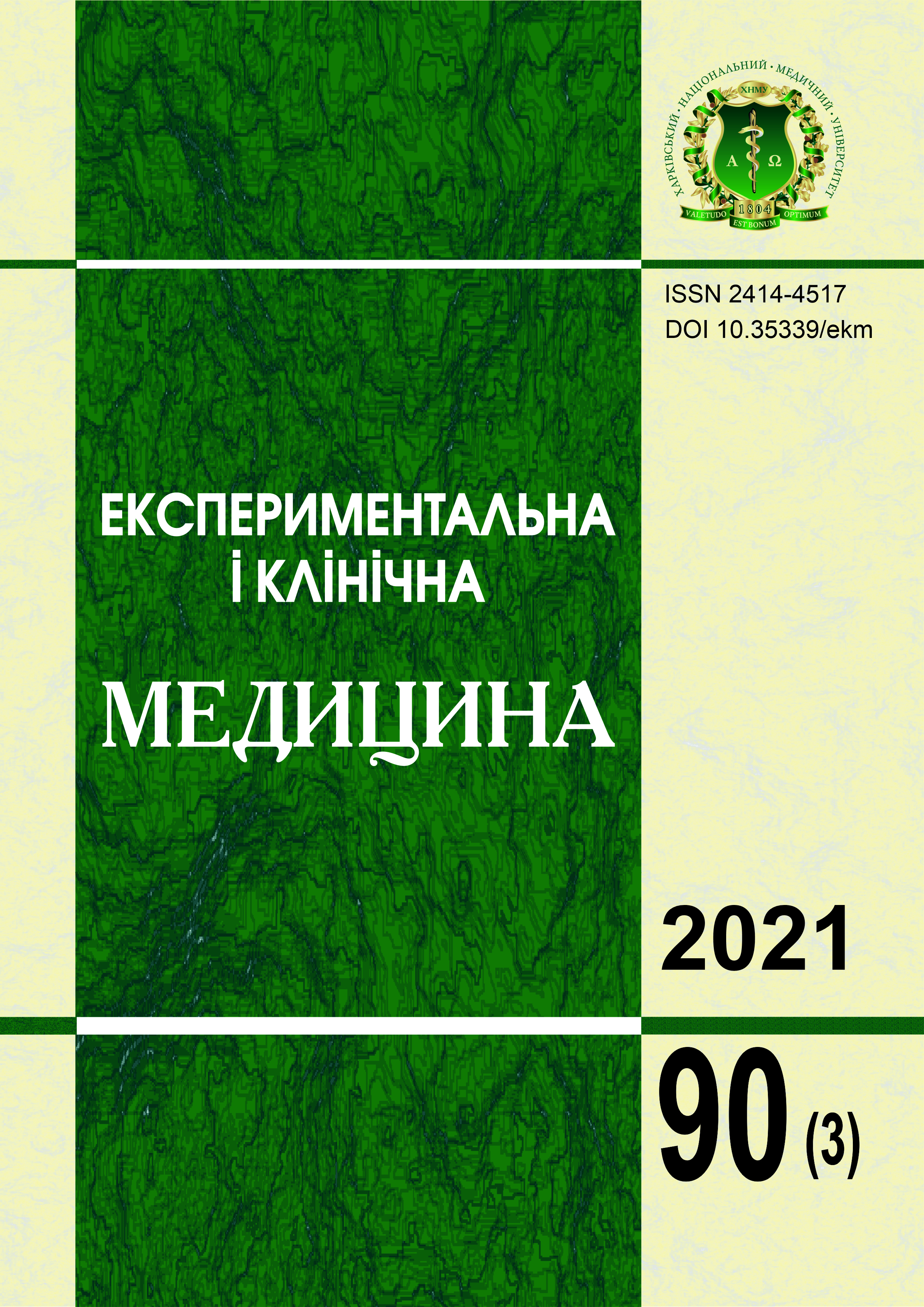Abstract
Retinal detachment (RD) is a condition that requires urgent ophthalmic surgery. Existing methods of RD vitreoretinal correction cause numerous complications and bring inconvenience to patients due to the need for vitrectomy and postoperative tamponade. Therefore, methods of RD surgical treatment are promising, which allow forming a strong chorioretinal adhesion in a short period of time after surgery, but damage the retina as little as possible. With this aim, in an experiment on rabbits, we studied the consequences of damage and features of retinal repair after high-frequency monopolar electrocoagulation (at a current of 0.1 A, 10–16 V and 66 kHz) by suprachoroidal access with an instrument of original design with a terminal sphere 25 G. For the experiment, 24 adult rabbits (48 eyes) were used, which were divided into three experimental groups (6 animals each, 12 eyes each) according to the exposure voltage (I – 10÷12 V, II – 12÷14 V, III – 14 ÷16 V) and one control (IV) group, which included 6 intact rabbits (12 eyes). Micropreparations obtained by us after euthanasia of animals early after surgery (after 1 hour and 3 days) showed us morphological changes in the eye tissues in places of direct contact with the electrode, remote and transitional areas. Edema processes prevailed among these changes. However, during this period, we could not investigate the processes of atrophy, which are also important for the recovery of acuity and visual fields after the recovery of RD. It was decided to monitor the animals for an additional period (until the end of the first month of the experiment), for which it will be necessary to increase the group of laboratory animals during the continuation of the experiment.
Keywords: chorioretinal surgery, experimental ophthalmic surgery, retinal detachment, retinal thickness.
References
World report on vision. Geneva: World Health Organization; 2019. 180 р. Available at: https://www.who.int/publications/i/item/9789241516570
GBD 2019 Blindness and Vision Impairment Collaborators; Vision Loss Expert Group of the Global Burden of Disease Study. Causes of blindness and vision impairment in 2020 and trends over 30 years, and prevalence of avoidable blindness in relation to VISION 2020: the Right to Sight: an analysis for the Global Burden of Disease Study. Lancet Glob Health. 2021;9(2):e144-e160. DOI: 10.1016/S2214-109X(20)30489-7. PMID: 33275949.
Burton MJ, Ramke J, Marques AP, Bourne RRA, Congdon N, Jones I, et al. The Lancet Global Health Commission on Global Eye Health: vision beyond 2020. Lancet Glob Health. 2021;9(4):e489-551. DOI: 10.1016/S2214-109X(20)30488-5. PMID: 33607016.
The Lancet Global Health. Unlocking human potential with universal eye health. Lancet Glob Health. 2021;9(4):e372. DOI: 10.1016/S2214-109X(21)00138-8. PMID: 33740398.
Lin KY, Hsih WH, Lin YB, Wen CY, Chang TJ. Update in the epidemiology, risk factors, screening, and treatment of diabetic retinopathy. J Diabetes Investig. 2021;12(8):1322-1325. DOI: 10.1111/jdi.13480. PMID: 33316144.
Hoogewoud F, Chronopoulos A, Varga Z, Souteyrand G, Thumann G, Schutz JS. Traumatic retinal detachment – the difficulty and importance of correct diagnosis. Surv Ophthalmol. 2016;61(2):156-63. DOI: 10.1016/j.survophthal.2015.07.003. PMID: 26216341.
Dulz S, Dimopoulos V, Katz T, Kromer R, Bigdon E, Spitzer MS, Skevas C. Reliability of the ocular trauma score for the predictability of traumatic and post-traumatic retinal detachment after open globe injury. Int J Ophthalmol. 2021;14(10):1589-94. DOI: 10.18240/ijo.2021.10.17. PMID: 34667737.
Nemet A, Moshiri A, Yiu G, Loewenstein A, Moisseiev E. A review of innovations in rhegmatogenous retinal detachment surgical techniques. J Ophthalmol. 2017;2017:4310643. DOI: 10.1155/2017/4310643. PMID: 28584664.
Sena DF, Kilian R, Liu S-H, Rizzo S, Virgili G. Pneumatic retinopexy versus scleral buckle for repairing simple rhegmatogenous retinal detachments. Cochrane Database of Systematic Reviews. 2021;(11):Art.No.CD008350. DOI: 10.1002/14651858.CD008350.pub3.
Antaki F, Dirani A, Ciongoli MR, Steel DHW, Rezende F. Hemorrhagic complications associated with suprachoroidal buckling. Int J Retina Vitreous. 2020;6:10. DOI: 10.1186/s40942-020-00211-6. PMID: 32318273.
Znaor L, Medic A, Binder S, Vucinovic A, Marin Lovric J, Puljak L. Pars plana vitrectomy versus scleral buckling for repairing simple rhegmatogenous retinal detachments. Cochrane Database Syst Rev. 2019;3(3):CD009562. DOI: 10.1002/14651858.CD009562.pub2. PMID: 30848830.
Bentivoglio M, Valmaggia C, Scholl HPN, Guber J. Comparative study of endolaser versus cryocoagulation in vitrectomy for rhegmatogenous retinal detachment. BMC Ophthalmol. 2019;19(1):96. DOI: 10.1186/s12886-019-1099-9. PMID: 31023285.
Cranwell WC, Sinclair R. Optimising cryosurgery technique. Aust Fam Physician. 2017;46(5):270-4. PMID: 28472571.
Dimopoulos S, William A, Voykov B, Bartz-Schmidt KU, Ziemssen F, Leitritz MA. Results of different strategies to manage complicated retinal re-detachment. Graefes Arch Clin Exp Ophthalmol. 2021;259(2):335-341. DOI: 10.1007/s00417-020-04923-1. PMID: 32926193.
Serhiienko A, Saoud O. Retinal surgery through the suprachoroidal access. Symposium "Retina Lviv 2021" proceedings [in Ukrainian].
Saoud O, Serhiienko A. Monopolar coagulator for surgery with suprachoroidal access. Medicine Today and Tomorrow. 2021;90(3):25-34. https://doi.org/10.35339/msz.2021.90.3.sse [in Ukrainian].
Summanen P. Retinal detachment: Clinical guideline No.00814 based on evidence-based medicine. Ministry of Health of Ukraine, Duodecim Medical Publications Ltd; 2017. 4 p. [Internet]. Available at: https://guidelines.moz.gov.ua/documents/3594 [accessed 10 Jun 2021]. [In Ukrainian].
Pidvalna UY. Morphological features of organ of vision under pathological conditions. Scientific Bulletin of Uzhhorod University. Series "Medicine" 2013;3(48):244-8. Available at: https://dspace.uzhnu.edu.ua/jspui/handle/lib/1446 [in Ukrainian].
Maksymuk OJu. Optical coherent tomography in diagnosis of acute disorders of venous blood circulation in the retina and their complications. Actual Problems of the Modern Medicine: Bulletin of Ukrainian Medical Stomatological Academy. 2020;20(4):72-7. DOI: 10.31718/2077-1096.20.4.72. [In Ukrainian].
Pavlov SB. Mechanisms of participation of the physiological system of successful tissue in the molding of pathological processes. Dis ... doc biol sc spec. 14.03.04 – pathological physiology. Sumi: Sumy State University; 2017. 394 p. Available at: https://core.ac.uk/download/324282101.pdf [in Ukrainian].

